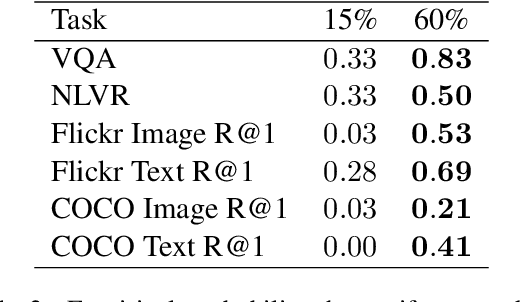Uniform Masking Prevails in Vision-Language Pretraining
Paper and Code
Dec 10, 2022



Masked Language Modeling (MLM) has proven to be an essential component of Vision-Language (VL) pretraining. To implement MLM, the researcher must make two design choices: the masking strategy, which determines which tokens to mask, and the masking rate, which determines how many tokens to mask. Previous work has focused primarily on the masking strategy while setting the masking rate at a default of 15\%. In this paper, we show that increasing this masking rate improves downstream performance while simultaneously reducing performance gap among different masking strategies, rendering the uniform masking strategy competitive to other more complex ones. Surprisingly, we also discover that increasing the masking rate leads to gains in Image-Text Matching (ITM) tasks, suggesting that the role of MLM goes beyond language modeling in VL pretraining.
 Add to Chrome
Add to Chrome Add to Firefox
Add to Firefox Add to Edge
Add to Edge